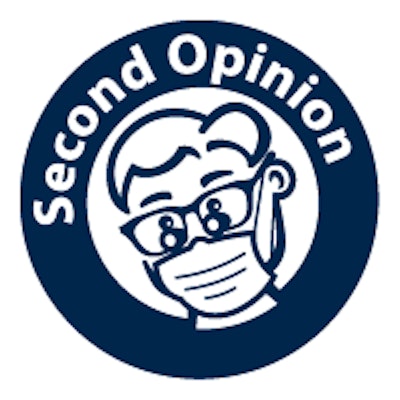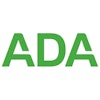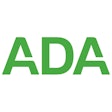

The answers to these questions are a natural starting place for any dentist being recruited to participate in a plan's network. Dr. Hirsch's overarching question -- the one he didn't ask, but which he certainly implies -- is this: "How can any dentist agree to participate in these policies without a grasp on how these plans work, what they cover, and when?" If I take his point correctly, I quite agree.
 Jeff Album of Delta Dental.
Jeff Album of Delta Dental.Our affiliated companies offer standalone family and pediatric dental policies in 40 public state exchanges this year; next year we hope to be in all 50 states. As a mission-driven enterprise, we feel an obligation to try and extend the reach of dental benefits to a population our industry has not traditionally served cost-effectively before the ACA: very small groups and individuals.
The advent of public exchanges is a game-changer in the marketing and administration of dental benefits to this dentally underserved population. From a carrier perspective, exchanges reduce acquisition costs, consolidate the handling and processing of eligibility data, and serve as a centralized hub that can make these benefits more affordable than ever for this particular population. On the other hand, as will soon be made clear to your readers, the morass of federal and state rules and regulations regarding how dental must be offered, all emerging since passage of the ACA, is tremendously confounding. These rules and regulations are frustrating to work with and are the source of most of the confusion being experienced by dentists, patients, and those within the insurance community as well.
Whether they understand them or not, Americans are buying these benefits -- dental that is. The federal government reports this year that 1.4 million individuals -- mostly adults -- applied for a standalone dental plan on a state-based or federally facilitated exchange. When all is actually said, done, and paid for, that number will likely fall to under a million lives, but our holding company system will have captured around 200,000 of those lives. In addition, as a subcontractor and partner to several health plans around the country, we are providing benefits to another 450,000 adults and children who get these dental benefits through an ACA-compliant medical plan.
But back to Dr. Hirsch's questions about ACA dental benefits. What do these policies actually look like, and what are the specific federal and state rules that cause them to be the way they are? Our affiliated companies work hard to ensure that the policies we offer follow the rules but still do right by the dentist and the patient. But the applicable rules and regulations by no means ensure that all public exchange dental carriers do the same.
My goal here is not to convince Dr. Hirsch or any DrBicuspid.com reader to participate with a dental plan offering these policies. Ultimately, it will make good sense for some dentists in some states with some dental plans to do so. But depending on how a specific dental policy is constructed, this will not always be the case. Having a good education as to how the ACA works with respect to both pediatric dental care and adult dental -- particularly when that plan is standalone versus embedded in a health policy -- is the best starting point to make this determination.
So, let's take Dr. Hirsch's questions in the order he poses them. What we don't get to in this article, we will take up in the next article in this two-part series.
What are the essential health benefits for pediatric dentistry?
Under federal rules, pediatric dental essential health benefits (EHBs) are set on a state-by-state basis. Yet, despite numerous possible variations within those rules, there are really only two types of pediatric dental EHBs that were eventually adopted in every state, except for Utah:
- The scope of benefits found in the largest dental plan offered under the Federal Employee Dental and Vision Insurance Program (also known as FEDVIP, which is offered to several hundred thousand federal workers across the country)
- The scope of benefits found in an individual state's Children's Health Insurance Program (CHIP); this latter benchmark actually varies state by state
Generally speaking, state-based exchanges opted to use their locally developed CHIP programs as the benchmark plan. The Federally Facilitated Marketplaces (FFMs) went with FEDVIP. And generally (again), both benchmarks are fairly robust in nature. Which is to say, most dental services typically covered under a commercial dental program are also covered in these programs. But beware the many caveats concerning this coverage, which are about to be explained in the next response.
Define these terms for us, since the government couldn't
Now, just because a certain "scope of services" is covered under a selected benchmark program, this does not mean the coverage for those services is necessarily as broad as in the benchmark plan. In fact, there is a clear dichotomy between dental plans sold in an exchange as a standalone plan, versus those sold embedded in a medical policy.
Under federal rules, standalone pediatric EHBs must carry an "actuarial value" of either 85% (high) or 70% (low). On the high actuarial value, for example, this means that for every dollar of covered services provided to an enrollee, the plan must pay, on average, 85 cents and the patient 15 cents. Such plans at either level will typically have low deductibles in the $25 to $50 range. The high plans generally do not apply the deductible to any D&P services. The low plans more often need to apply the deductible to all services including D&P because there is no way to hit the lower actuarial value requirement without doing so.
Just to be clear, who comes up with these plans where a deductible is applied to D&P? Those are your federal government's rules and regulations at work, not those of your friendly neighborhood dental plan.
But remember, actuarial values are only averages. They are based on an entire population and the expected utilization of services, and what they do is provide a kind of protective straitjacket for how coverage versus cost-sharing will occur on any standalone pediatric dental plan purchased.
Embedded dental, by contrast, is not required to follow any actuarial value requirement. Dental is never counted (under federal rules) toward a health plan's actuarial value reporting requirement, such as when the health plan files a Platinum, Gold, Silver, or Bronze tiered medical plan. As a result, some embedded dental plans provide the benchmark pediatric dental plan with D&P carved out of a much higher medical-dental combined deductible (quite commonly at $2,000 to $4,000 per individual). Other embedded dental plans provide zero services until these high combined medical-dental deductibles are exhausted.
By the way, adults in these policies -- and it's mostly adults who are buying them -- are a whole different matter. Adults have a more traditional $1,000 to $1,500 annual limit on covered services, have no out-of-pocket maximum, and do not get coverage for medically necessary orthodontia. The federal rules permit this, and for adults, these programs somewhat resemble traditional commercial dental insurance, but tend to be thinner, with 12-month waiting periods for major restorative services, or no coverage at all beyond D&P and basic. That's the trade-off to keep these benefits affordable but still promote preventive dentistry.
In the second part of this column, Mr. Album will respond to questions such as why there are so many plans on the market and what people are getting in terms of preventive coverage.
Jeff Album is vice president of public and government affairs for Delta Dental of California, Delta Dental of New York, Delta Dental of Pennsylvania, and their affiliates. They are all part of a San Francisco-based dental insurance holding company system that is represented in 40 public state health exchanges.
The comments and observations expressed herein do not necessarily reflect the opinions of DrBicuspid.com, nor should they be construed as an endorsement or admonishment of any particular idea, vendor, or organization.



















